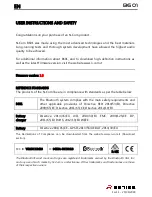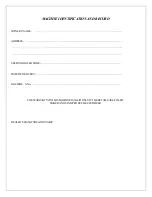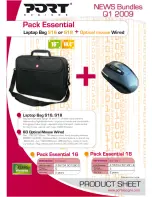
B-5
OPERATION
B-5
Crater
- Used only when welding with the 4-Step trig-
ger mode. Can be set to Off or On. When On,
Adjustments can be made to WFS and Volts/Trim on
the Control/Display panel. These settings are then
used for ʻcrateringʼ when in the 4-Step trigger mode
(see explanation of 2 Step and 4 Step operation
below). When Off, ʻcrateringʼ is not possible.
CONTROL BOX -- PC BOARD ADJUSTMENTS
The Control Box Mother board provides the capability
to adjust some wire feeding parameters as follows:
Acceleration:
The motor acceleration can be varied
in five steps, from slow to fast. See “Setting DIP
Switches in the Control Box” section.
Burnback:
For the options which cannot adjust the
Burnback set up parameter (CV/G and M panels) a
PC board adjustment (trimmer R5) is provided. The
range is 0.0 to 0.25 seconds, increasing in the clock-
wise direction. This is ignored by options which have
the ability to adjust Burnback (MX2 and MSP2 pan-
els).
Run In:
For the options which cannot adjust the Run
In set up parameter (CV/G and M panels) a PC board
DIP switch setting is provided. In one position, the run
in speed will be the minimum Wire Drive WFS. At the
other setting, run in will occur at the same speed as
set on the WFS knob. This DIP switch setting is
ignored by options which have the ability to adjust
Run In (MX2 and MSP2 panels). See “Setting DIP
Switches in the Control Box” section.
CONTROL BOX -- SETTING OPERATING LIMITS
Upper and lower operating limits can be set for the
WFS/Amps setting and the Volts/Trim setting. Doing
so requires knowledge of how to set the limits, and
access to the PC board in the Control Box.
There are two independent sets of limits, Procedure A
limits and Procedure B limits. If a DP/M door option is
installed, the A and B limits must be set independent-
ly. If there is no DP/M door option, the Control Box
defaults to Procedure A, and only Procedure A limits
can be set.
With system power on, select the weld mode for which
you want to set limits. If a Dual Procedure option is
installed, select the procedure A. Turn the system
power off. Remove the two screws holding the
Control/Display panel to the Control Box, but do not
unplug it. Tilt the panel down to allow access to DIP
switches S1-1, S2-6 and S2-7. (See “Setting DIP
Switches in the Control Box” section.) Do not allow
the panel to hang by the wiring harness.
Determine if the Wire Drive is set up for low or high
speed. If low speed, S1-1 should be off. If high speed,
set S1-1 to on.
To adjust the lower limit, set S2-6 to on. Turn the
power on and adjust the WFS/Amps and Volts/Trim
knobs to the desired lower limits. Note: You will not be
able to adjust the lower limit outside of the minimum
and maximum wire feed speed of the Wire Drive, nor
above the upper limit. Turn the system power off.
Return S2-6 to off.
To adjust the upper limit, set S2-7 to on. Turn the
power on and adjust the WFS/Amps and Volts/Trim
knobs to the desired upper limits. Note: You will not
be able to adjust the upper limit outside of the mini-
mum and maximum wire feed speed of the Wire
Drive, nor below the lower limit. Turn the system
power off. Return S2-7 to off.
If a Dual Procedure panel is installed, repeat the
above procedure with the Procedure B selected.
When done, attach the Control/Display panel to the
Control Box. The machine is now ready for normal
operation with the new limits.
CONTROL BOX -- USING OPERATING LIMITS
Once set, limits apply to all weld modes. Limiting
Procedure A to 200 to 300 inches per minute, for
example, limits the ability of the operator to adjust his
WFS in pulse, CV and FCAW weld modes. Limiting
the Volts to 23.0 to 24.5 would limit the ability of the
operator to adjust his Volts in synergic and non-syner-
gic CV modes. Procedure B could be set up with dif-
ferent limits. Limits are absolute -- they will override
values stored in the memories. Note that limits do not
apply to set up parameters, such a Preflow and Arc
Control.
POWER FEED 10 DUAL
Summary of Contents for IM658-A
Page 63: ...NOTES POWER FEED 10 DUAL...
















































